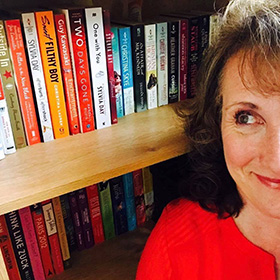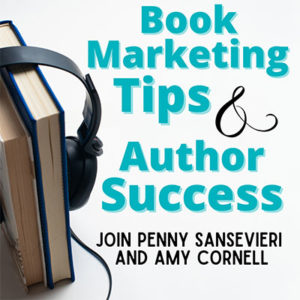I talk to a lot of authors at events, in coaching sessions, even to some who reach out to work with us, who want to know how to sell self-published books without bowing down to the Amazon beast.
And I get it. Even though I’m a big proponent of figuring out how to work with Amazon, as opposed to eschewing the site altogether, I’m a bigger fan of education – and helping authors make educated and strategic decisions that are right for them.
So, when I found an article by Andrew Couldwell, I thought it had a lot of really great insight to share. This author figured out how to sell self-published books in a way that worked for their specific needs and goals – and documented the trials and tribulations so other authors could learn from the experience.
Maybe Andrew’s way is something you want to try out for yourself, maybe you’re more of an “exclusive to Amazon” author, or perhaps you fall somewhere in between – but as I said, education is our strongest tool as self-published authors so give this a read no matter what!
Note: Andrew graciously included detailed technical aspects and cost breakdowns of the platforms covered in the original article, so definitely check it out when you’re ready to dig deeper, as some have been removed from the below to reduce the overall length of the post.
How do you sell a self-published book online and manage shipping?
By Andrew Couldwell
This is the fourth and final part of a series about how we self-published a book. This part is about online selling and distributing your book.
There are various means of selling and distributing a self-published book. The service you used to print your books may go a long way to deciding — or even dictating — which method or services you adopt, which we’ll come back to. You can also use multiple sales channels to reach a wider audience. This article delves into the pros and cons of the options available to you and shares our story of how we sold and distributed our book.
I’ll start with the three options we didn’t do, and why.
1. Print-on-demand online stores
Some print-on-demand services have their own online stores that sell your book. For example, see Blurb’s Bookstore or BookBaby’s BookShop. Your book gets its own web page you can direct customers to, and is discoverable on their platform. If you’re looking for the easiest option and you’re not too bothered about profit, then this option is fine. It requires almost no setup and no input from you (i.e. no maintenance and no processing orders).
2. Amazon
If you used Amazon’s KDP print-on-demand (POD) service, then I believe your only option is to use Amazon to sell your book. If not, most other POD services offer automatic setup of your book to be sold on Amazon, whereby your sales on Amazon are automatically transferred to the POD service you use to fulfil and ship to your customer. Again, there’s very little setup and no ongoing work is required by you.
If you hold stock of your book yourself, or you’re willing to send Amazon stock to hold in their warehouse(s), then you can also take a more manual approach to sell your book on Amazon by setting up a Seller’s Account.
3. Ingram (wholesale)
I went into more detail of how Ingram works in my previous article about print-on-demand services. But in brief, Ingram is the largest wholesale and distribution network of books in the world. Bookstores can order a stock of any book in Ingram’s inventory to sell in their stores at a wholesale price. Similarly, online bookstores can instantly sell any book in the inventory, only the sale on their website is transferred to Ingram to fulfil the order. Some print-on-demand services offer to make your book available via Ingram as part of their service, or you can add your book to Ingram’s inventory yourself.
You set your book’s selling price and a wholesale discount price. The wholesale price is what the online or brick and mortar bookstores pay to purchase your book from you to sell for a profit. Understandably, this price needs to be lower than your selling price or the merchants won’t invest in your book. Ingram recommends a wholesale price of 55% of your selling price.
4. Sell the book yourself
To recap and to pick up where we left off in the previous article in this series: at this point in our own self-publishing process, we had a large stock of books printed and ready to sell ourselves. While our experience in getting to this point was far from ideal… It turns out we now had the best and most profitable options available to us.
The advantages of selling and shipping your own book are:
Analytics and customer insights
Website analytics help you track where your traffic is coming from so you know which of your marketing efforts are working. They also help you identify areas of your website you could improve, be it SEO for more organic traffic or weak points in your sales funnel.
Create custom discounts
Creating custom discounts is ideal for sale periods like Black Friday, treating your family and friends, or offering exclusive offers to people who registered interest in your book pre-launch or targeting specific audiences.
Freedom to customise everything
An on-brand experience tailored to your book is the cherry on top that your hard work deserves. A well-designed e-commerce experience improves your chances of a sale. You can also fine-tune your book’s website to improve your standing in Google’s search results or tweak your content, pricing, and special offers to see what impact your changes have on your sales. I found myself doing this a lot, yielding good results.
You can actually make a profit
I ran the projections with the 3 options (earlier in this article) and our profit margin came out at $0–2 per book. After several months of hard work, taking time out of work to produce the book, and investing in a stock of printed books, you want to make a profit!
Platforms like Shopify, Squarespace, or WordPress — or a simplified experience using PayPal or Stripe as a payment gateway — empower you to sell your book yourself for a significantly smaller fee than the options we’ve already explored.
We used Shopify.
Once you’ve selected your shipping method, you need to print a shipping label to affix to your package. A shipping label simply has the package’s details, destination, sender info, and a barcode for the carrier to scan. You could print these labels on your home printer, but then you’d need to trim them down to size and tape/stick them to your package — which would be a real pain in the ass if you’re processing hundreds/thousands of books! For sanity’s sake, we bought a label printing machine that prints shipping labels onto an easily affixable sticker. I highly recommend getting a label printer! I dread to think how many hours it’s saved us.
Shipping a book is tricky, as books can be easily damaged in transit. We tried 3 different mailers. We tested them so you don’t have to:
Our first attempt at a protective mailer was a padded bubble mailer. We sent out a small batch of free books as an advanced preview, which gave the bubble mailers a test run. At least 30% of the books we sent were damaged in transit!
We discovered a much better solution in stay-flat mailers made of rigid cardboard, which is much harder to bend or dent than a bubble mailer. Unfortunately, our first batch of stay-flat mailers proved to be inefficient. We sent hundreds of books in these mailers and didn’t receive any complaints about damaged books, but after a couple of weeks, we had 3 customers report that they received the mailer with no book in it! Seemingly, the bottom of the mailer had burst open in transit.
We then moved on to a stronger stay-flat mailer, which is a lot sturdier and more secure, and so far has been fine.
Tip: invest in quality packaging! In the long run, it will cost you more in refunds and replacing damaged books than any saving you made by buying a cheaper mailer.
Be prepared
Shipping books is hard work! While Shopify and a label printing machine make things much easier — it’s very time-consuming processing orders, packing books into mailers, shifting heavy boxes, and driving shipments to the post office every day. Don’t plan to do much other than processing orders for at least the first couple of weeks after launch. And I’m not just talking about processing orders — you also have to market the book, answer questions from customers, and troubleshoot all sorts of things you didn’t see coming, like customs holding your book hostage in foreign countries, books not turning up at their destination, etc.
It’s also good to create a frequently asked questions and/or terms and conditions page on your book’s website. Be clear and up-front with your customers about what they’re buying, what your refund policy is, how long shipping takes, why shipping internationally cost so much, etc.
What would we do differently?
If we self-published a book again, we wouldn’t waste our time with print-on-demand services. We’re glad we explored the options, but we know better now. Next time, we would source a traditional, local (or overseas?) printer. We would definitely use Shopify again.
While we endured some frustrating periods… Overall, I definitely recommend self-publishing a book. It’s a very rewarding experience. I’m proud of what my wife and I created together.
Figuring Out How to Sell Self-Published Books is a Big Decision
I hope this shines some light on all the different elements you potentially have to consider when deciding how to sell self-published books. It can seem overwhelming, but keep in mind, becoming a self-published author is quite literally like starting a business, so investing in your education is imperative!
You can find Andrew Couldwell’s book and read the whole article, plus the rest of the series, here!
If you found this post helpful, please use the social buttons at the bottom to share on Facebook, Twitter or LinkedIn and tag me, or you can email this post to a friend or colleague!
Resources and Downloads
Monthly Book Marketing Planner
The Key to Successful Book Marketing Is Making Genuine Connections
Check out more episodes of our Book Marketing & Author Success Podcast!





Is there a how to set up a website to sell your book on?
Michele there are tons of these resources out there, we honestly can’t tell you there’s one exact right place to start other than encouraging you to get in touch with authors within your network that have good looking, functional sites, and get their recommendations. Many have probably hired someone to a certain extent to at least get the website structure built for them. I’d encourage you to read the original article (and series) in full as well when it comes to the selling elements. While it’s just one author’s experience, it’s still great insight.